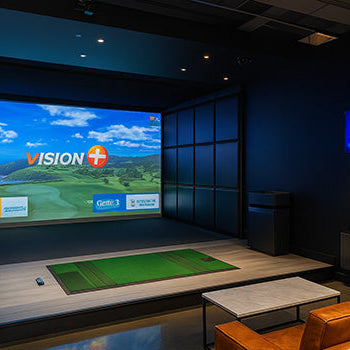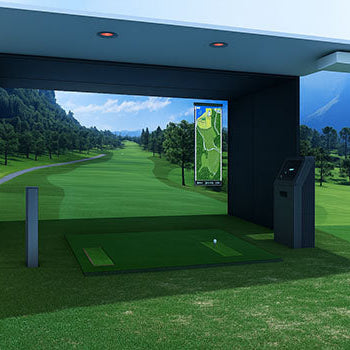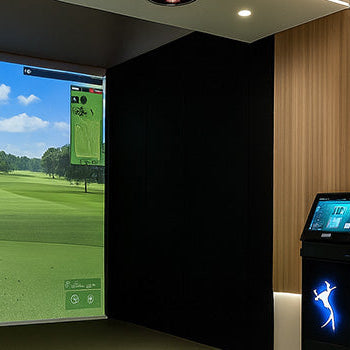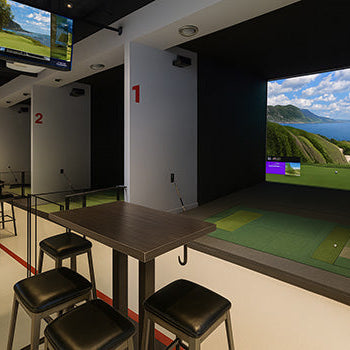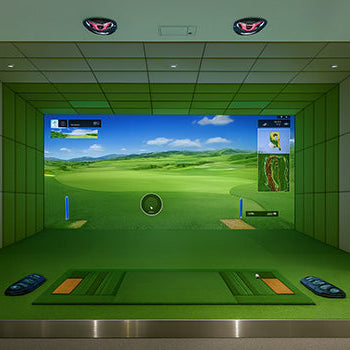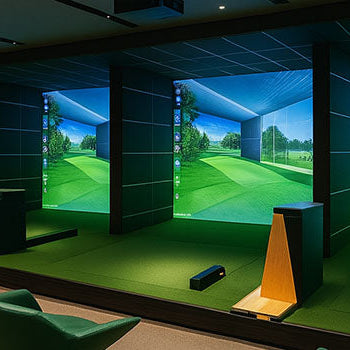Ever crushed a drive on your indoor setup, only to see numbers that make no sense? You’re not alone. It’s easy to wonder if the golf ball is the problem.
Short answer: No, you don’t always need special balls for a golf simulator, but in some cases, they’ll give you sharper, more accurate data.
Let’s break down when standard balls are fine, when to upgrade, and how to get the best bang for your buck.

The General Rule: Standard Golf Balls Work Perfectly
Why You Don’t Need to Buy “Simulator-Specific” Golf Balls
Here’s the truth, most golfers won’t need anything beyond their usual golf balls. If you're using a decent simulator and keeping your balls in good condition, your data will be solid.
Many so-called “simulator balls” are just rebranded versions of what you already play with. The tech behind your simulator (not the ball) usually does the heavy lifting. Unless you’re chasing ultra-precise spin numbers, you’re better off saving the cash.
Using the Same Ball You Play With on the Course for Best Results
This one’s a no-brainer. Practice with the ball you actually play with. It’s like training in the same shoes you race in, you want consistency between practice and play.
If you switch balls indoors, your carry distances, spin rates, and feel could all be off when you get back on the course. That’s not helpful when you’re trying to groove your game.
The Importance of Using Clean, Unscuffed Golf Balls (How Long Does a Golf Ball Last in a Simulator?)
Simulators rely on sensors, light, radar, or both. To read your ball’s flight. A scuffed or dirty ball can throw off readings, making it look like your perfect 7-iron went haywire.
Clean, smooth balls give your simulator the best chance of capturing accurate data.
As for lifespan? A high-quality ball can last hundreds, if not thousands, of strikes in a simulator before showing real wear. Just keep it clean and rotate your balls regularly to keep things consistent.

The Exception: When “Marked” Balls Are Recommended
What Are Marked Golf Balls? (e.g., Titleist RCT)
Ever heard of Titleist RCT balls? They look like regular Pro V1s but have a twist, an internal reflective layer that radar can lock onto.
These aren’t gimmicks. They’re engineered specifically for indoor use with radar systems that struggle to see spin on plain white balls in tight spaces.
How Metallic Stickers Help Radar-Based Launch Monitors
Some players use reflective stickers instead. These tiny metallic dots stick to the ball and act like a beacon for your launch monitor.
They help radar pick up detailed spin data, especially when there's not much room for the ball to fly. It's a simple trick with a big payoff.
Why This Leads to More Accurate Spin Data, Especially Indoors
Radar systems need space to track the ball's full flight. Indoors, that space just isn’t there.
Marked balls or stickers help radar systems detect spin almost instantly, giving you more reliable launch, side spin, and backspin numbers.
If you’re doing indoor wedge work or tweaking your driver settings, these details matter, a lot.
Which Simulators Benefit Most from Marked Balls?
Radar Systems: TrackMan, Garmin Approach R10, Mevo+
These simulators sit behind you and use Doppler radar to track the ball’s motion. Indoors, they have a narrow window to read the ball, often just a few feet.
That’s where marked balls shine. They give the radar a better chance of measuring spin early and accurately, especially on shorter shots.
TrackMan and Mevo+ users, especially, swear by Titleist RCTs or stickered balls for better feedback indoors.
Camera-Based Systems: Why They Don’t Require Marked Balls (e.g., SkyTrak, Foresight)
Camera-based systems use high-speed imaging to read the ball's movement. These setups track dimple patterns and visual changes in flight to capture data accurately.
They don’t need reflective dots or internal markers. In fact, sometimes stickers can confuse the system and mess with your data.
So if you're using a camera system, stick with your regular clean golf balls.
Can I Use My Own Marked Balls at a Commercial Simulator?
Why Most Venues Provide Their Own Standardised Balls
If you're headed to a golf simulator venue, they’ve probably already calibrated their system to specific balls.
Bringing your own can throw off readings, damage equipment, or even violate their rules. Most facilities don’t want the hassle. That’s why they use their own approved balls across all bays.
The Importance of Asking the Venue Before Your Visit
Got your own RCTs or stickered balls and want to use them at a local sim lounge? Ask first.
Some places are happy to accommodate, others might give you a hard no. Better to check than show up and get turned away at the tee box.

Key Takeaways for Choosing Your Simulator Golf Ball – Best Golf Balls for Simulator Play
For most users, a clean, premium golf ball is perfect.
You don’t need to overthink it. Keep your balls clean and unmarked, and most simulators will perform just fine.
For radar users chasing maximum accuracy, a marked ball is the gold standard.
Whether it’s a Titleist RCT or a stickered ball, this small upgrade can unlock next-level data indoors.
Never use sharpie-marked, cracked, or heavily scuffed balls.
They can mess with your numbers and potentially damage high-end launch monitors.
